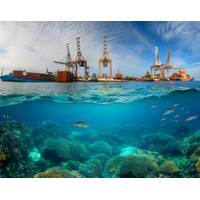
Restoring Marine Habitats and Port Decarbonization
marine ecosystem restoration in the Coral Triangle. Proceedings of the National Academy of Sciences, 114, 11986 - 11991.17.Guannel, G., Arkema, K., Ruggiero, P., & Verutes, G. (2016). The Power of Three: Coral Reefs, Seagrasses and Mangroves Protect Coastal Regions and Increase Their Resilience. PLoS ONE, 11.18.Mcleod, E., Chmura, G. L., Bouillon, S., Salm, R., Björk, M., Duarte, C. M., ... & Silliman, B. R. (2011). A blueprint for blue carbon: toward an improved understanding of the role of vegetated coastal habitats in sequestering CO2. Frontiers in Ecology and the Environment, 9(10)
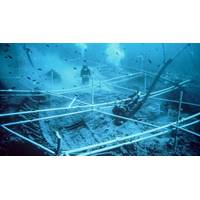
Study Sheds New Light on Ancient Shipwreck off Cyprus
it was going to or from Cyprus, and the cargo - amphora types - suggest it was trading in the Aegean and east Mediterranean area. The main cargo comprised amphora of a type associated with the island of Rhodes in the southeast Aegean," said Manning, lead author of the study published in the journal PLOS ONE.Using various lines of evidence, the researchers determined that the ship had been constructed between about 345-313 BC and sank between about 286-272 BC.The death in 323 BC of Alexander, who had conquered wide swathes of the Mediterranean region and beyond, led to regional scrambles for power.
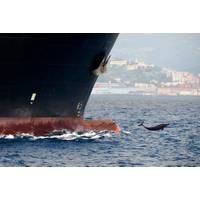
The Potential of Restoring Marine Habitats
marine ecosystem restoration in the Coral Triangle. Proceedings of the National Academy of Sciences, 114, 11986 - 11991.17.Guannel, G., Arkema, K., Ruggiero, P., & Verutes, G. (2016). The Power of Three: Coral Reefs, Seagrasses and Mangroves Protect Coastal Regions and Increase Their Resilience. PLoS ONE, 11.18.Mcleod, E., Chmura, G. L., Bouillon, S., Salm, R., Björk, M., Duarte, C. M., ... & Silliman, B. R. (2011). A blueprint for blue carbon: toward an improved understanding of the role of vegetated coastal habitats in sequestering CO2. Frontiers in Ecology and the Environment, 9(10)

A Soft Solution to a Hard Underwater Problem
alternative sampling device that is soft, flexible, and customizable, allowing scientists to gently grab different types of organisms from the sea without damaging them, and 3D-print modifications to the device overnight without the need to return to a land-based laboratory. The research is reported in PLOS One.“When interacting with soft, delicate underwater creatures, it makes the most sense for your sampling equipment to also be soft and gentle,” said co-author Rob Wood, Ph.D., a Founding Core Faculty member of the Wyss Institute who is also the Charles River Professor of Engineering and
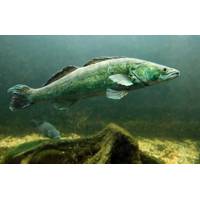
Fish Tracked from DNA 'Finprints' Left in Waters off New York
," lead author Mark Stoeckle, from New York's Rockefeller University, told Reuters. The one-litre (two-pint) samples, costing $50 to process, let scientists monitor annual migrations of fish in spring 2016 to the rivers and their estuaries, according to the study published in the journal PLOS One. It said it was the first time fish migrations had been tracked solely by DNA. Understanding fish migrations can help countries time the opening of fishing grounds and other activities. In New York, for instance, the port authority is banned from dredging when winter flounder are
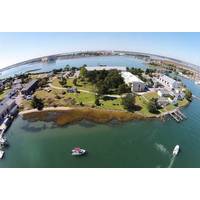
Study: ‘Living Shorelines’ Can Lessen Climate Change Effects
habitats “Living shorelines”—protected and stabilized shorelines using natural materials such as plants, sand and rock—can help to keep carbon out of the atmosphere, helping to blunt the effects of climate change, according to a recent NOAA study published in the journal PLOS One. This study, reportedly the first of its kind, measured carbon storing, or “carbon sequestration,” in the coastal wetlands and the narrow, fringing marshes of living shorelines in North Carolina. “Shoreline management techniques like this can help reduce carbon
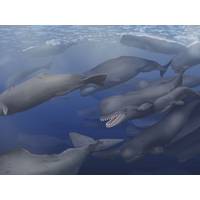
Scientists Dust Off Enigmatic Fossil Whale
introduced the species, Albicetus oxymycterus, to a new branch on the sperm whale family tree. The scientists contend that the toothy fossil provides evidence of ancient seas rich in the number and diversity of marine mammals. Their findings are published in the Dec. 9 issue of the scientific journal PLOS ONE. The fossils of this sperm whale, which represent the animal’s skull, jaws and teeth, date 14–16 million years ago, in a time known as the Middle Miocene, and were found in California in the 1880s. Because of the fossils’ bone-white color, the research team decided to
Adélie Penguin Population Doubles
Adélie penguin populations in East Antarctica have almost doubled over the past 30 years, according to research published in PLOS ONE today. Australian Antarctic Division seabird ecologists, Dr Colin Southwell and Dr Louise Emmerson, alongside colleagues from Australia, France and Japan, found that the five main regional populations of Adélie penguins in East Antarctica have increased by 69 per cent since 1980. The team used aerial photographs and ground-based observations to count Adélie penguins during recent summer breeding seasons at 99 sites located along 4500 km
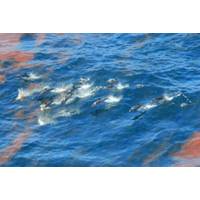
Dolphin die-off Spurred by BP Oil Spill
Atmospheric Administration (NOAA). "Dolphins were negatively impacted by exposure to petroleum compounds," from the spill, said Stephanie Venn-Watson, a veterinary epidemiologist at the National Marine Mammal Foundation and lead author of the study published in the scientific journal PLOS ONE. "Exposure to these compounds caused life-threatening adrenal and lung disease that has contributed to the increase of dolphin deaths in the northern Gulf of Mexico," she added. More than 1,200 cetacean marine mammals, mostly bottlenose dolphins, have been found beached


 February 2025
February 2025





